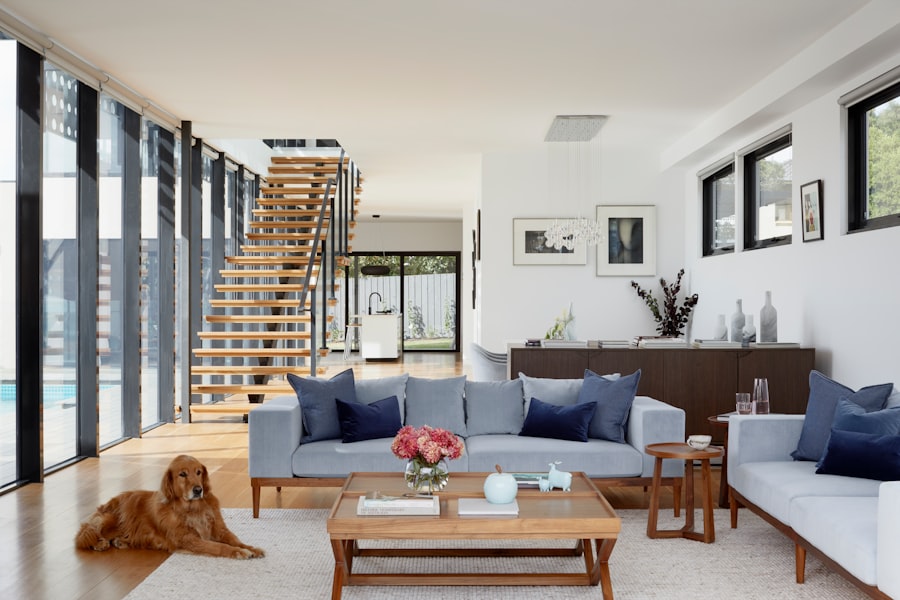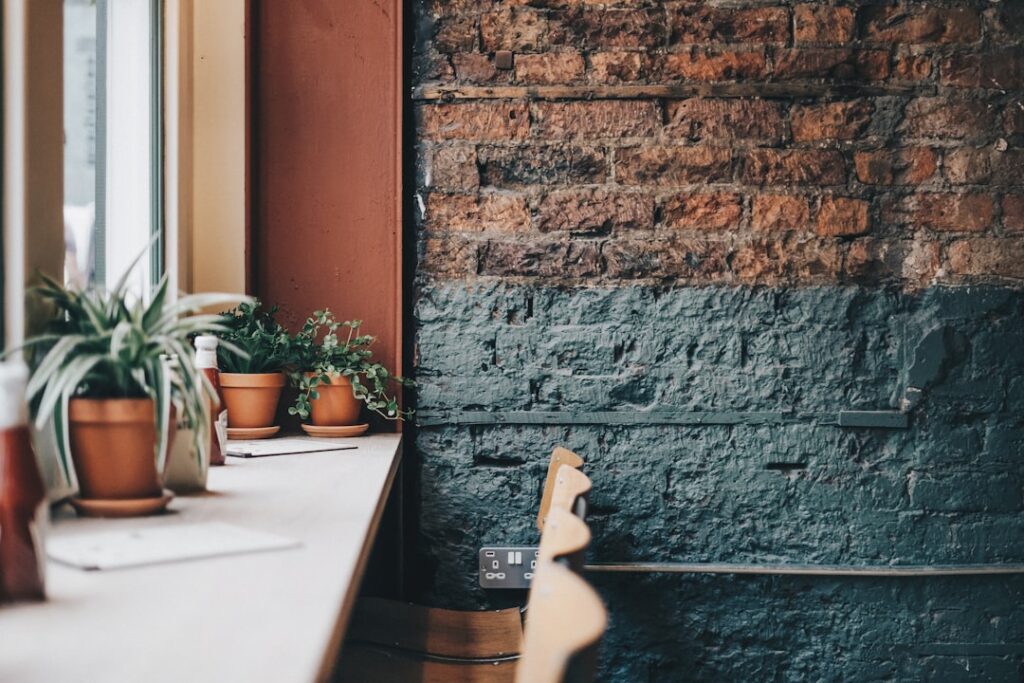When it comes to furnishing a home, the selection of furniture and decor plays a pivotal role in establishing a lasting aesthetic. Timeless furniture is characterized by its enduring design, quality craftsmanship, and versatility. Pieces that have stood the test of time often feature classic lines and neutral colors, making them adaptable to various styles and trends.
For instance, a well-crafted wooden dining table can serve as the centerpiece of a dining room for decades, accommodating everything from formal dinners to casual family gatherings. Similarly, upholstered sofas in classic shapes, such as Chesterfield or mid-century modern designs, can seamlessly blend with different decor styles, ensuring that they remain relevant regardless of changing trends. In addition to furniture, decor elements should also be chosen with longevity in mind.
Accessories such as vintage mirrors, timeless artwork, and classic lighting fixtures can enhance the overall aesthetic without becoming outdated. For example, a large, ornate mirror can not only serve as a functional piece but also reflect light and create an illusion of space, making it a valuable addition to any room. When selecting decor, it is essential to prioritize quality over quantity; investing in fewer, high-quality pieces will yield a more sophisticated look than filling a space with numerous trendy items that may quickly lose their appeal.
Key Takeaways
- Choose furniture and decor with timeless designs to ensure longevity and versatility in your space.
- Opt for a neutral color palette to create a calming and cohesive atmosphere in your home.
- Incorporate natural materials such as wood, stone, and plants to bring warmth and texture to your space.
- Add soft furnishings like rugs, throws, and pillows to introduce texture and comfort to your room.
- Create a focal point in your space with art and accessories to add personality and visual interest.
- Layer different lighting sources such as overhead, task, and accent lighting to create ambiance and functionality.
- Keep your space clutter-free by utilizing storage solutions and minimizing unnecessary items.
- Personalize your space with unique touches such as family heirlooms, travel souvenirs, or handmade items to make it truly your own.
Selecting a Neutral Color Palette
A neutral color palette serves as the foundation for a timeless interior design scheme. Shades such as beige, gray, taupe, and soft whites create a serene backdrop that allows other elements of the decor to shine. These colors are not only versatile but also evoke a sense of calm and sophistication.
For instance, painting walls in a soft gray can provide a subtle warmth while allowing for easy integration with various accent colors and textures. This approach enables homeowners to change their decor over time without the need for extensive renovations or repainting. Moreover, a neutral palette can enhance the perception of space and light within a room.
Lighter shades reflect natural light, making areas feel more open and airy. This is particularly beneficial in smaller spaces where maximizing light is crucial. To add depth and interest to a neutral color scheme, consider incorporating varying shades and tones within the same palette.
For example, pairing a warm beige with cooler taupe can create visual intrigue while maintaining an overall cohesive look. By carefully selecting a neutral color palette, homeowners can establish a timeless aesthetic that remains inviting and adaptable.
Incorporating Natural Materials

The use of natural materials in home decor not only enhances the aesthetic appeal but also contributes to a sense of warmth and authenticity. Wood, stone, leather, and natural fibers are all excellent choices for creating a timeless environment. For instance, reclaimed wood furniture pieces not only add character but also tell a story of sustainability and craftsmanship.
Adding Texture with Soft Furnishings
Texture is an essential component of interior design that adds depth and visual interest to any space. Soft furnishings such as cushions, throws, rugs, and curtains play a significant role in introducing texture into a room. Layering different fabrics can create a rich sensory experience that invites comfort and warmth.
For instance, combining velvet cushions with linen throws on a sofa not only enhances the tactile experience but also adds an element of luxury. Rugs are another effective way to introduce texture while defining spaces within an open floor plan. A plush area rug can anchor furniture arrangements and provide warmth underfoot.
Opting for rugs made from natural fibers like jute or wool can further enhance the organic feel of the space. Additionally, curtains made from lightweight fabrics can soften harsh lines and add an ethereal quality to windows. By carefully selecting soft furnishings that vary in texture, homeowners can create an inviting atmosphere that encourages relaxation and comfort.
Creating a Focal Point with Art and Accessories
Art and accessories are powerful tools for creating focal points within a room. A well-placed piece of artwork or an eye-catching accessory can draw attention and set the tone for the entire space. When selecting art, consider pieces that resonate personally or evoke emotion; this connection will enhance the overall ambiance of the room.
A large canvas painting above a fireplace or a gallery wall featuring framed photographs can serve as conversation starters while adding character to the environment. Accessories such as sculptures, vases, or unique collectibles can also contribute to the focal point of a room. For example, an oversized ceramic vase filled with fresh flowers can bring life to a dining table or console.
Similarly, strategically placed decorative objects on shelves or coffee tables can create visual interest without overwhelming the space. The key is to strike a balance between statement pieces and complementary accessories that enhance rather than compete with one another. By thoughtfully curating art and accessories, homeowners can establish focal points that reflect their personality while enhancing the overall design.
Layering Lighting for Ambiance

Lighting is one of the most critical aspects of interior design that often goes overlooked. A well-designed lighting scheme can transform the mood of a space and highlight its best features. Layering different types of lighting—ambient, task, and accent—creates depth and versatility within any room.
Ambient lighting provides overall illumination; this can be achieved through ceiling fixtures or wall sconces that cast light evenly throughout the space. Task lighting is essential for specific activities such as reading or cooking; table lamps beside sofas or pendant lights over kitchen islands serve this purpose effectively. Accent lighting adds drama by highlighting artwork or architectural features; spotlights or LED strips can be used to draw attention to these elements.
By combining these three types of lighting, homeowners can create an inviting atmosphere that adapts to various needs throughout the day. For instance, dimming lights during evening gatherings fosters intimacy while brightening them during daytime activities enhances productivity.
Keeping the Space Clutter-Free
A clutter-free environment is essential for achieving a timeless aesthetic that feels both serene and organized. Excess clutter can detract from the beauty of well-chosen furniture and decor; therefore, it is crucial to establish effective storage solutions that keep items out of sight while remaining easily accessible. Built-in shelving units or stylish storage baskets can help maintain order without sacrificing style.
Regularly assessing belongings is also vital in preventing clutter accumulation. Adopting a minimalist approach by keeping only those items that serve a purpose or hold sentimental value allows for greater appreciation of each piece within the space. This practice not only enhances visual appeal but also contributes to mental clarity by creating an environment conducive to relaxation and focus.
By prioritizing organization and simplicity, homeowners can cultivate spaces that feel timelessly elegant rather than chaotic.
Personalizing the Space with Unique Touches
While timeless design principles provide a solid foundation for any home, personal touches are what truly make a space feel like one’s own. Incorporating unique elements such as family heirlooms, travel souvenirs, or handmade crafts adds character and tells a story about the inhabitants of the home. For example, displaying cherished photographs in beautifully framed arrangements creates an intimate atmosphere while showcasing personal history.
Additionally, integrating custom-made pieces—such as bespoke furniture or locally sourced art—can further enhance individuality within the design scheme. These unique touches not only reflect personal style but also foster connections with memories and experiences associated with each item. By thoughtfully curating personal elements alongside timeless design principles, homeowners can create spaces that are not only aesthetically pleasing but also deeply meaningful and reflective of their identity.
If you are looking to optimize your conference room setup, you may want to consider incorporating stylish interior furniture to create a cohesive and professional look. This article on stylish interior furniture offers tips and ideas on how to choose the right pieces to enhance the overall design of your conference room. Additionally, ensuring workstation health and safety is crucial in any office environment. This article on workstation health and safety provides valuable information on how to create a comfortable and ergonomic workspace for employees. By combining these elements, you can create a functional and visually appealing conference room that promotes productivity and well-being.
FAQs
What is interior design?
Interior design is the art and science of enhancing the interior of a space to achieve a healthier and more aesthetically pleasing environment for the people using the space.
What is a room design?
Room design is the process of planning and decorating a specific room in a way that is both functional and visually appealing.
What are the key elements of interior design for a room?
Key elements of interior design for a room include space planning, color schemes, furniture selection, lighting, and decorative elements such as artwork and accessories.
What are some popular interior design styles for rooms?
Some popular interior design styles for rooms include modern, contemporary, traditional, minimalist, industrial, and bohemian.
How can I improve the interior design of a room on a budget?
Improving the interior design of a room on a budget can be achieved by using paint to refresh the walls, rearranging furniture for better flow, adding inexpensive decorative elements, and incorporating DIY projects.
What are some common mistakes to avoid in interior design for a room?
Common mistakes to avoid in interior design for a room include overcrowding the space with furniture, neglecting proper lighting, using too many different colors and patterns, and ignoring the functionality of the room.


